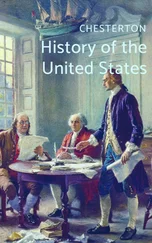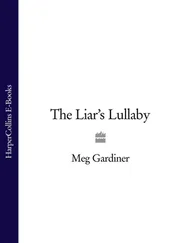Hospitalisation was not covered by health insurance, and the choice was between voluntary hospitals, which had originally been endowed by the rich for the care of the poor, and which included some of the most famous London teaching hospitals, and local authority hospitals, many of which had been former Poor Law institutions. The voluntary hospitals were permanently strapped for cash by the 1930s, and were dependent on bequests, fund-raising events such as concerts and fêtes, flag days and patients’ fees. Those on low incomes might have been paying a few pence a week which would give them the right to treatment should they need it (or if they were lucky their employer might have made a block provision for employees in this way), or they might be charged whatever the hospital almoner assessed they could afford. But the days of such hospitals were numbered: it was clear that voluntary contributions were no longer sufficient to keep them going, despite the fact that private patients’ fees, mostly paid through insurance schemes, covered almost half such hospitals’ costs), and by the end of the decade more hospital accommodation was provided by local authorities than by the voluntary sector.
The financial difficulties of the voluntary hospitals and the fact that they were not planned on a national scale according to the needs of the community, gave an opportunity to a group of medical practitioners who had a larger vision for health. The Socialist Medical Association (SMA) had been founded in 1930 with the support of, among others, the first Minister of Health, Christopher Addison, the journalist and propagandist for science Ritchie Calder and medical scientists and practitioners such as Somerville Hastings, a surgeon at the Middlesex Hospital in London and a Labour MP, Charles Brook, a London GP, David Stark Murray, a Scottish pathologist, and Richard Doll, who in the 1950s would prove the link between smoking and lung cancer. The SMA looked to the creation of a socialised medical system which would both streamline the chaotic health provision of the 1930s and ultimately make health care ‘free to all rich and poor’. Furthermore, it wanted to end what it regarded as the ‘lonely isolation’ of the GP by creating salaried posts and locating them in a series of health centres based on municipal hospitals that integrated all aspects of medical care — owing something to the Peckham, Finsbury and Bermondsey models.
Although this blueprint for socialised medicine appears to prefigure the creation of the NHS in 1948, it was at local level — particularly in London — that the SMA came nearest to implementing its ideas in the 1930s. ‘Municipal socialism’ increasingly seemed to be a plausible strategy for undermining the National Government, and during the 1934 London County Council (LCC) elections the SMA produced a health manifesto claiming that the capital’s ill health was due to poverty, bad sanitation and inadequate medical care and treatment (due to lack of resources), for which ‘the anarchy of capitalism’, reflected in uncoordinated health care provision, was to blame. Seeing health as ‘every bit as important as education’, SMA members were appointed to a range of LCC committees when Labour won control, and were able to put some of their ideas into practice, such as increasing the allocation of resources to municipal hospitals, improving the conditions and pay of nurses and other medical staff, providing outpatient facilities at most hospitals for the surrounding community and ridding hospitals of any Poor Law connotations, since ‘every possible suggestion of charity, subservience, and general second rateness must be banished’. Instead London’s citizens should regard ‘the municipal hospitals as their own [since they had] every right to use them and expect the best from them’. But although the reform of London’s health provision was of considerable interest to other authorities, even Somerville Hastings, chairman of the LCC Hospital and Medical Services Committee, recognised that it was unlikely to be fully possible ‘within the limits of existing legislation’.
As well as inadequate hospital provision, the range of remedies doctors could provide was still very limited: during their brief consultation patients would be given a handful of pills, which might come in a range of colours but would in fact probably all be aspirins, though bottles of dilute mixtures of powerful drugs such as kaolin and morphine were also dispensed. A Welsh doctor provided his miner patients with a tincture of chloroform and morphine, effectively an addictive drug, for their chronic chest conditions. Many general practitioners had few aids to diagnosis, a stethoscope, thermometer, ear syringe and maybe a speculum being fairly standard, sterilising instruments was a dispensable luxury, and doctors had to pay for laboratory tests themselves — and therefore tended not to take advantage of new techniques and treatments that were being developed during the 1930s. A Welsh doctor who prescribed little but ‘black liquorice’ for his miner patients’ pneumoconiosis was regarded as a cut above other practitioners in the town, since he had a machine that enabled him to take a patient’s blood pressure.
Aware of their limited therapeutic arsenal, doctors essentially bought time by dispensing medicine, hoping that an illness would turn out to be self-limiting and would disappear, while patients appeared to be satisfied if they left the surgery clutching a bottle of medicine (private patients would have their bottle wrapped in white paper and sealed with sealing wax and usually delivered by the doctor’s errand boy on a bicycle after evening surgery) or, less frequently, a box of pills, for which they had paid two or three pence. Aspirin powder for pain relief had been available since the turn of the century, and a tablet form had been patented in 1914, insulin injections to control diabetes had been introduced in the 1920s, followed by kidney dialysis, radium treatment for cancers, skin grafts and blood transfusions. Salvarsan was effective as a cure for syphilis and pernicious anaemia could now be treated with iron injections (rather than raw liver sandwiches, as previously), while the significance of vitamins began to be appreciated, leading to new therapies using vitamins C and D in cases of scurvy and rickets.
However, there were few things in the medicine cupboard in Eileen Whiteing’s home ‘apart from fruit salts, cough mixture, plus iodine for cuts … and we certainly did not include [the commonplace aspirin] in our home remedies, having to endure headaches and other pains until they went away of their own accord … cod liver oil and “Virol” were favourite remedies for winter ailments … and in the case of nerves or depression, a strong iron tonic would be prescribed, with the advice to “pull yourself together”.’
Diphtheria in children, an infection resulting in the throat thickening and the danger of suffocation, was one of the spectres hovering over the inter-war years, with some 50,000 cases every year. Two thousand children died each year from diphtheria and whooping cough until effective vaccines began to be used towards the end of the decade. Eileen Whiteing recalled that when she and her sister caught ‘the dreaded diphtheria … Mother refused to let us go away to hospital, so a trained nurse was engaged at great expense, and, between the two of them, plus the resident maid, we were nursed safely through the long weeks of fever. Disinfected sheets had to be hung over the bedroom doors, all visitors had to wear white coats and face masks, and the whole house had to be fumigated by the local health officers at the end of the isolation period … People were endlessly kind … since illness was quite a serious event then: I remember hearing the news in hushed tones that straw had been spread over the road outside the house of one of my friends while he lay desperately fighting for his life with double pneumonia in order that the noise of passing traffic should not disturb him until what was known as the “crisis” was past’ and the patient’s dangerously high temperature either fell, or he or she died of exhaustion or heart failure, since in the absence of any effective medication, all the doctor could do was visit several times a day, wait and watch.
Читать дальше












